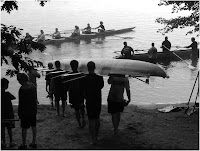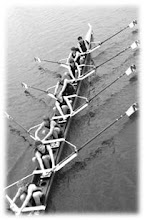CAMBRIDGE, Mass. (August 17, 2009) – The 45th Head Of The Charles Regatta, taking place on the Charles River in Boston and Cambridge, Mass., October 17 and 18, will feature one of the greatest fields of elite rowers that this legendary Regatta has ever assembled, it was announced by race organizers today.
All six of the finalists from the 2008 Olympic Single Sculls event – Olaf Tufte (gold medal), Ondrej Synek (silver medal), Mahe Drysdale (bronze medal), Tim Maeyens (fourth), Alan Campbell (fifth) and Lassi Karonen (sixth) – will be joined by 2008 Olympic Double Sculls finalist Iztok Cop and Marcel Hacker, winner of the petite final at the 2008 Olympics – in an eight-man sweeps boat dubbed the "Great Eight."
The Great Eight will compete in the Championship Men's Eights race at the Head Of The Charles against a field that is scheduled to also have national team boats representing the United States, Great Britain and France.
The Regatta also announced that it will change its one-race rule that, until now has allowed each competitor to only register for and compete in one event in the Head Of The Charles. For Championship and Lightweight Events only, any rower who competes in the 2009 World Rowing Championship in Ponzan, Poland, will be allowed to compete in both a sculling boat (single or double) and a sweep boat (fours, eights).
"We've relaxed the one-race rule this year to give not only these world-class athletes the opportunity to compete in both sculling and sweeps events, but any of the rowers from this year's World Championship," said Schoch. "This will add excitement for the fans and all of the rowers involved as it gives them another chance to see some of the best rowers in the world battle the challenging Charles River course not once, but twice."
The Championship Eight is Sunday at 4pm.































